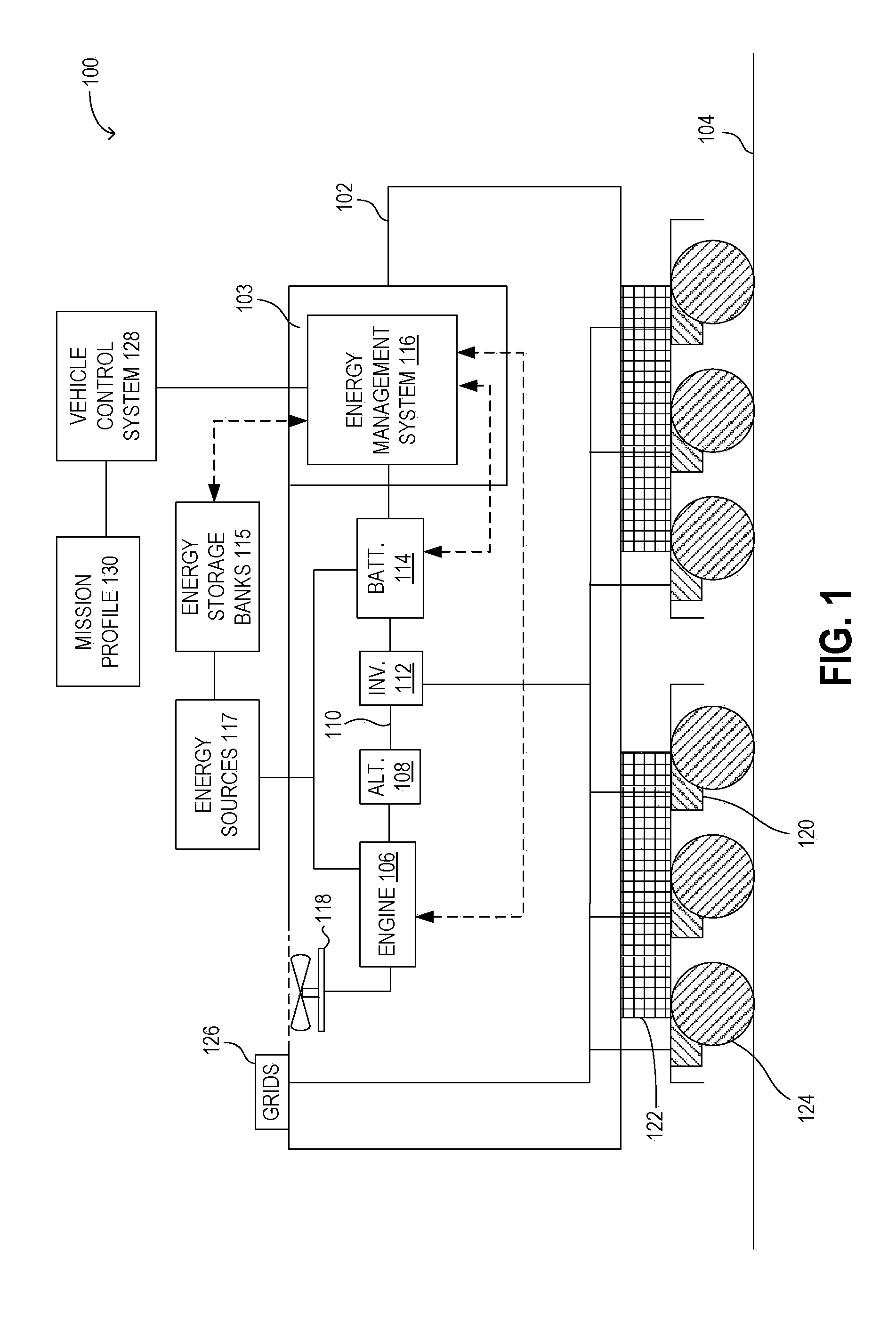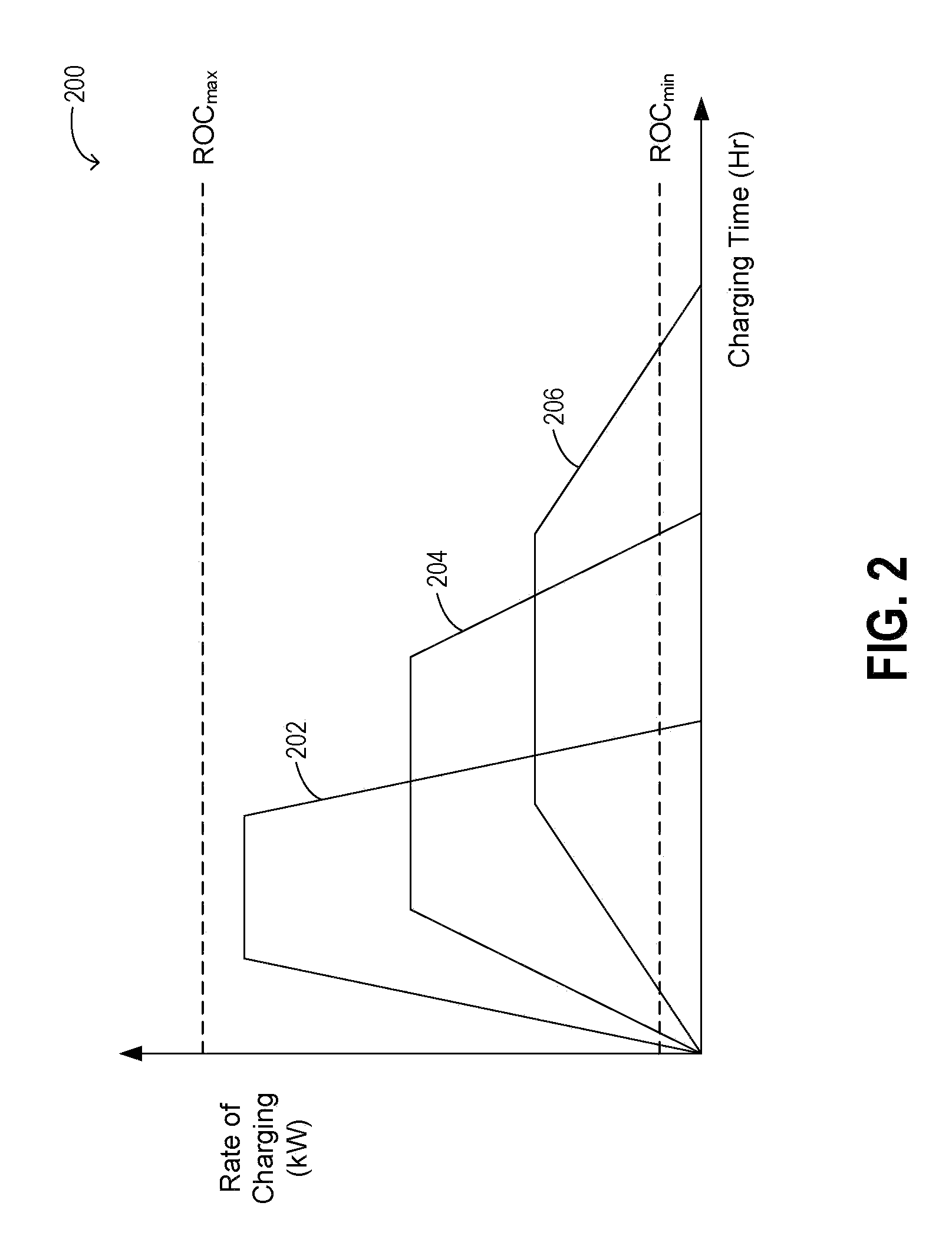Method and system for extending life of a vehicle energy storage device
a technology for energy storage devices and vehicles, applied in the direction of battery/fuel cell control arrangement, secondary cell servicing/maintenance, hybrid vehicles, etc., can solve the problems of affecting the operating life and performance characteristics of such devices, affecting the operating life and storage capacity of an energy storage device, and frequent cycles of periodic charging and discharging of energy storage devices
- Summary
- Abstract
- Description
- Claims
- Application Information
AI Technical Summary
Benefits of technology
Problems solved by technology
Method used
Image
Examples
Embodiment Construction
[0015]Vehicles, such as locomotives operating with rechargeable electrical energy storage devices, may be configured with integrated energy management systems that control power transfer profiles to and from the energy storage device. The power transfer profile may be controlled based not only on the operating condition of the energy storage device, but also responsive to charging / discharging opportunities available during a mission and other inherent characteristics of the device that may affect the device's performance. One example is illustrated with reference to FIG. 1 wherein an energy management system monitors the operating conditions of a locomotive's on-board electrical energy storage device and accordingly adjusts the charging / discharging profile so as to maximize the operating life of the device. The charging cycle of the energy storage device may be optimized into a plurality of sub-charging cycles that match the expected performance and life of the device.
[0016]As illus...
PUM
 Login to View More
Login to View More Abstract
Description
Claims
Application Information
 Login to View More
Login to View More - R&D
- Intellectual Property
- Life Sciences
- Materials
- Tech Scout
- Unparalleled Data Quality
- Higher Quality Content
- 60% Fewer Hallucinations
Browse by: Latest US Patents, China's latest patents, Technical Efficacy Thesaurus, Application Domain, Technology Topic, Popular Technical Reports.
© 2025 PatSnap. All rights reserved.Legal|Privacy policy|Modern Slavery Act Transparency Statement|Sitemap|About US| Contact US: help@patsnap.com



